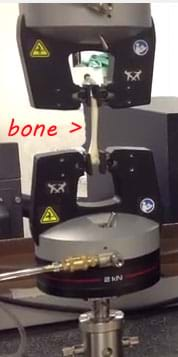Materials List:
Bone Crusher
 https://www.teachengineering.org/activities/view/uoh_fracture_lesson01_activity1
https://www.teachengineering.org/activities/view/uoh_fracture_lesson01_activity1
Each group needs:
- 1 small animal bone, such as from a cat, turkey or chicken; purchase a turkey or chicken from a grocery store or butcher and remove the bones, or purchase a cat for anatomy dissection and remove the bones, or purchase a cat skeleton from https://www.skullsunlimited.com/products/real-cat-skeleton-sk-318
- access to a scale, to measure bone mass
- access to water, graduated containers and a sink, to measure bone volume by water displacement
- (optional) calculators
- computers or iPads with Internet access for student research, ideally one per group
- poster-making supplies or PowerPoint® software, to create a class presentation
- Bone Crusher Fracture Worksheet, one per group
- Bone Crusher Design Worksheet, one per student
To share with the entire class:
- tension-compression machine and a video camera to record bone fracture testing; see the note below for options
- safety glasses
Options for tension-compression machines:
- Arrange to use a tension-compression machine, such as a Tinius Olsen universal testing machine, at a local university. Contact the mechanical engineering department first, then the civil engineering department, requesting access to a tension-compression machine. Depending on the machine size, it can be transported to your classroom, or take the class to the university. If a machine is not available for classroom use, arrange for someone at the university to fracture the bones while students watch live via Skype or FaceTime.
- Use the method described in the Sticks and Stones Will Break That Bone! activity. To do this, duct tape a bone so it spans the gap between two tabletops; from the middle of the bone, hang an S-hook connected to a length of chain or rope holding a bucket by its handle. Add weights or sand into the bucket until the bone breaks. After a fracture occurs, measure the weighted bucket. Most chicken bones are capable of holding 40-50 pounds (18-23 kg). Some bones require a large amount of weight to fracture, close to 200 pounds (90 kg).

A tension-compression machine applies force to break a cat femur.
 https://www.teachengineering.org/activities/view/uoh_fracture_lesson01_activity1
https://www.teachengineering.org/activities/view/uoh_fracture_lesson01_activity1